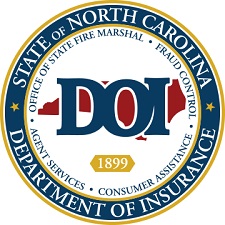
Vehicle crashes are the leading cause of death among children
Special to Iredell Free News
RALEIGH — In recognition of Child Passenger Safety Awareness Week, September 20-26, Insurance Commissioner Mike Causey is joining the Governor’s Highway Safety Program in urging parents and caregivers to ensure children are secured in a properly installed child safety seat when riding in a vehicle to save lives.
A child’s age, weight, and height can all play a factor when determining proper safety harnesses, so it’s important to stay informed with all current regulations and suggestions.
“Child safety seats are the single most effective traffic safety device for saving lives and preventing injury in car crashes,” Causey said. “I hope everyone uses Child Passenger Safety Awareness Week as a time to learn why seat belts are important and what you can do to ensure you and your loved ones are properly buckled up every time.”
According to Safe Kids North Carolina, motor vehicle crashes are the number one cause of death among children ages 1 to 19. Of those children ages 12 and under who died in vehicle crashes in 2017, nearly 40 percent were not properly restrained.
Also, children ages 2 to 5 who use safety belts prematurely are four times more likely to suffer a serious injury if in an accident.
“North Carolina law requires that all occupants younger than age 16 be restrained in an age and size appropriate restraint, and those under 8 must be in a seat appropriate to their child’s weight,” said NCGHSP Director Mark Ezzell. “Because of our 25-year partnership with the Department of Insurance, there are thousands of trained experts in communities across the state to help parents and caregivers correctly install safety and comply with this law. North Carolina has become a national model in keeping infants, children with disabilities and older kids safe on our state’s roadways.”
Car Seat Safety Tips
♦ Choose a car seat that fits your child and your vehicle.
♦ Install the seat rear-facing as long as possible, often until after age 2 and 30 pounds.
♦ Once installed, the seat should not move at the belt path more than 1 inch from side to side or back to front.
♦ When buckling your child, keep the chest clip at armpit level; the harness straps should be tight enough that you cannot pinch the webbing together vertically.
♦ Use the car seat until your child reaches the top height or weight allowed by the manufacturer.
Checking Stations
There are more than 230 permanent checking stations located at fire stations and other sites in North Carolina that can provide these services year-round. Stations can be found at www.buckleupnc.org.



